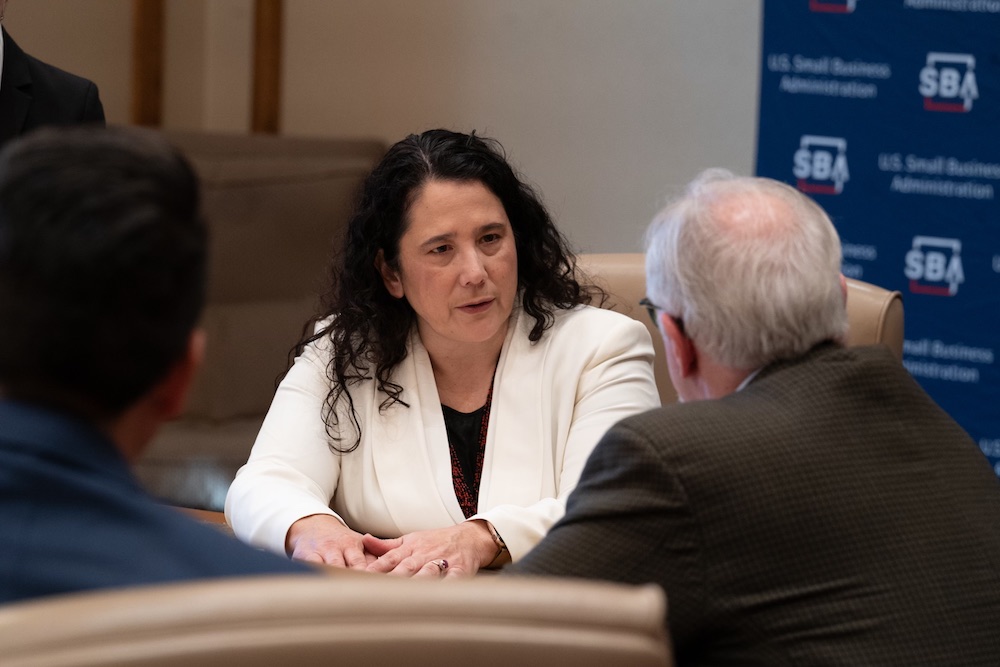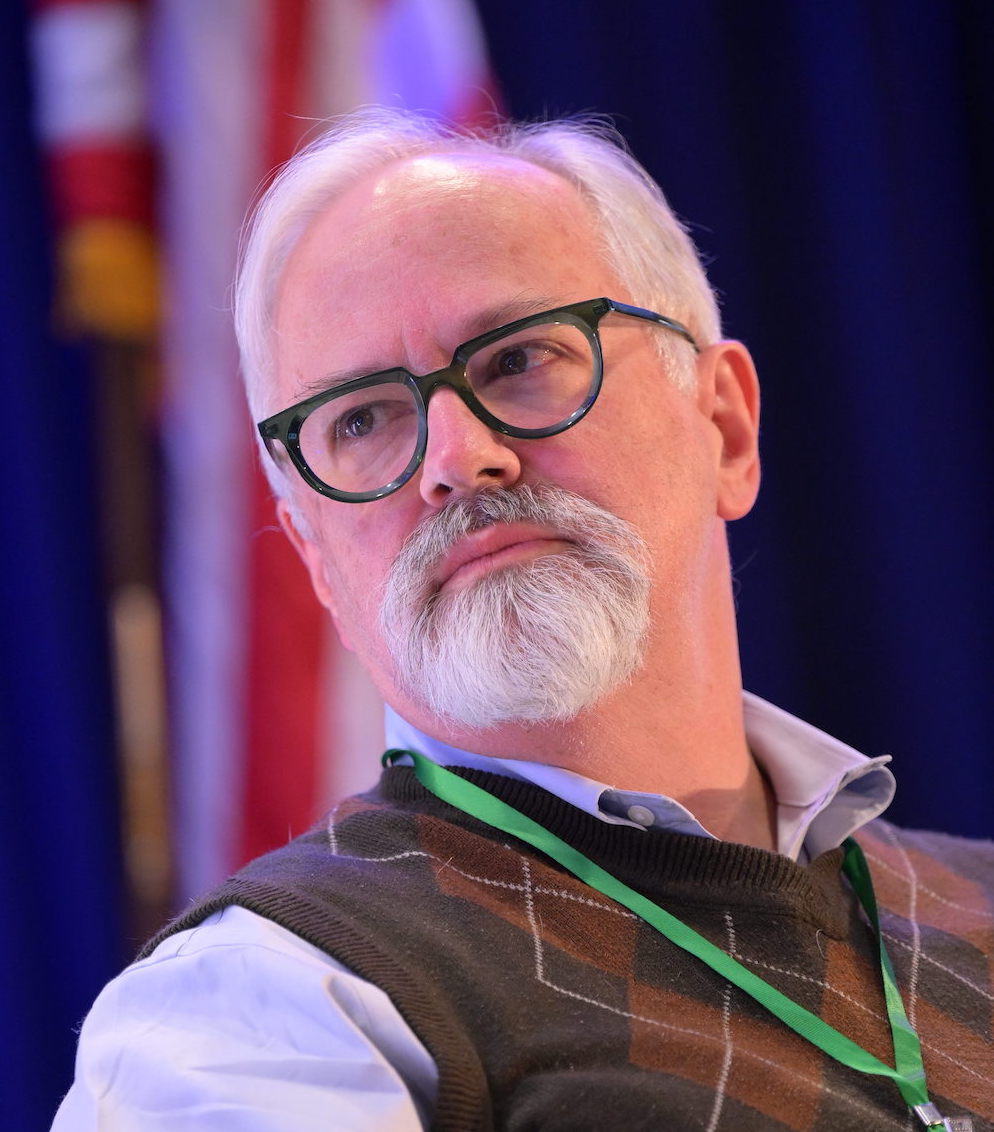
- Details
- By Brian Edwards
- Economic Development
LAS VEGAS — During a visit to Navajo Nation early in her tenure, SBA Administrator Isabel Casillas Guzman got a firsthand look at the unique challenges faced by Native American entrepreneurs, including logistical hurdles to e-commerce and access to capital.
It gave her an appreciation of the higher level of performance and expertise that Native entrepreneurs have to bring to the table as small-business owners, Guzman told Tribal Business News earlier this week during a one-on-one conversation at the 2024 Reservation Economic Summit (RES). “They have to operate at such a higher efficiency to be able to manage those extra costs,” she said.
During the interview, Guzman discussed the challenges and opportunities facing Native American entrepreneurs, focusing on issues such as access to capital, the role of Native Community Development Financial Institutions (CDFIs), the importance of equity in small business support programs, and threats posed to the 8(a) program by recent legal challenges.
This discussion has been edited for clarity and length.
You've been on the job for about three years now. What have you learned about Indian Country?
Very early on, we went to Navajo Nation, and I got a chance to meet with small business owners who are on the ground. And really, I didn't have as strong of an understanding, even though I've heard that it's hard to run a business (there).
What did you find valuable about that trip?
Being able to talk to one business owner that we visited quite extensively with — a makeup business, Ah-Shí Beauty. She talked about the challenges. They literally have to have their other location off the reservation to be able to manage the shipping for their e-commerce. They can't drop ship. You know, FedEx shows up when they show up, and it's very haphazard. So their ability to compete in the e-commerce marketplace, which represents such a huge opportunity for small businesses, is met with challenges that other businesses don't have. They have to operate at such a higher efficiency to be able to manage those extra costs of having multiple locations.
What other challenges have you learned about and prioritized?
Access to capital. (SBA is) really trying to dive deep into this issue, because we saw the barriers during (COVID with the Paycheck Protection Program), where things were taking longer, and we were literally having to have our lawyers walk through paperwork to improve access. We know that meeting businesses where they are is the number one thing, but in this case, being able to work with lenders who understand some of the nuances of property ownership and assets in tribal communities is really important. Understanding how to accept certain documentation from the Department of the Interior when it comes to ownership on tribal lands and being able to have flexibility in our programs.
So really, I appreciate the higher level of performance and expertise that Native entrepreneurs have to navigate (and how they are) even more challenging than those operating outside of native lands have to do.
When you talk about access to capital in Indian Country, Native CDFIs play an important role because they know their communities. How can the SBA work with Native CDFIs more closely?
We've really made an effort with the American Rescue Plan funding, in particular. We used those community navigator funds to partner with multiple Native-led entities or entities that were focused in Native communities. But in particular, our tier-one level partnership at the highest level with Oweesta Corporation, which became a hub and spoke with their CDFIs, was really transformational. We have doubled lending to Native entrepreneurs to $278 million — so a quarter-billion dollars. That's really a remarkable change in our system. We don't (normally) see that kind of spike, and we hope to continue to see that increase.
How do you think you can continue that trajectory? It’s taken some effort to get there.
Multiple things had to happen. We did institute transformational regulatory reform to simplify our products for all of our lenders. We also have focused on broadening the distribution network. So making our CDFI program, which is Community Advantage, permanent by giving them licenses as the SBA had at its disposal. We lifted a moratorium to make that possible, and now, these CDFIs don't have to worry about a cliff coming on the horizon and they're able to raise money for liquidity to be able to do lending. That program has seen a spike in lending, and they're the ones who work with people of color and rural communities to really fill gaps that the lending institutions, the more traditional banks, etcetera, have not been able to fill.
And so that's been one element, but the other is the partnerships. Being able to partner with Oweesta and share everything with them about SBA’s resources so that they can better navigate them. That has been transformational. We've signed up more lenders, Native CDFIs. We've given one of our first new small business licenses to an Alaska Native Corporation, McKinley Alaska Growth Capital.
As you head into year four, there's still work to be done, right? What’s on the to-do list, and what are some of the threats you see on the horizon for Indian Country?
For our country, equity is still a vital issue that we need to address in order for everyone to have a pathway to this American Dream, for everyone to be able to succeed. And the President's vision for investments in America includes historic legislative accomplishments that are going to translate into dollars — revenue opportunities for small businesses.
So now more than ever, equity in the decision-making and in leadership matters to ensure that we lift up all of our communities as we invest in America.
The historic investments in infrastructure, broadband, roads, bridges. All of those programs translate to opportunities for small businesses, whether it's the contract opportunities direct from federal or via state or local.
(All of those) translate to more jobs, which translates to more money in the local economy. So right now, doing more work to ensure that we're connecting small businesses and equitably connecting all small businesses to these programs is a vital concern.
What’s the biggest threat for Indian Country?
I think there’s a huge threat, in particular, I'll call out the attacks against the 8(a) program and the Ultima case. For Native entrepreneurs as well as tribal entities, they’ve seen an increase (in federal contracting) thanks to the Biden-Harris administration — an increase of almost 10% from (fiscal 2021) to (fiscal 2022) to $19 billion dollars. We'll be releasing our ‘23 numbers soon and expect to see continued growth.
Those are opportunities to not only help Native entrepreneurs, but also for tribal entities that create community benefits. These are economic-development strategies that help tribal entities also invest back into their communities, and we want these programs to continue. They've had a dramatic effect on helping economic development.
But with the current threats that are happening in the courts — Ultima as well as the protest against the naval contract — we’re seeing potential risk to the future of the program.
SBA knows that 8(a) has created jobs and created successful companies who have gone out to help us compete globally after graduation … (and) helped advance job creation locally. It’s a great program that we wouldn't want to see lost.
(If you think) back to our foundation during the Eisenhower administration, President Eisenhower saw the risk of a too-powerful industrial base dominated by large (corporations). They knew that they needed small, innovative, agile businesses to create not only the innovation, but competition in the industrial base. Being able to secure our national security (and) our democracy, these programs are vital. We want to see them continue.
